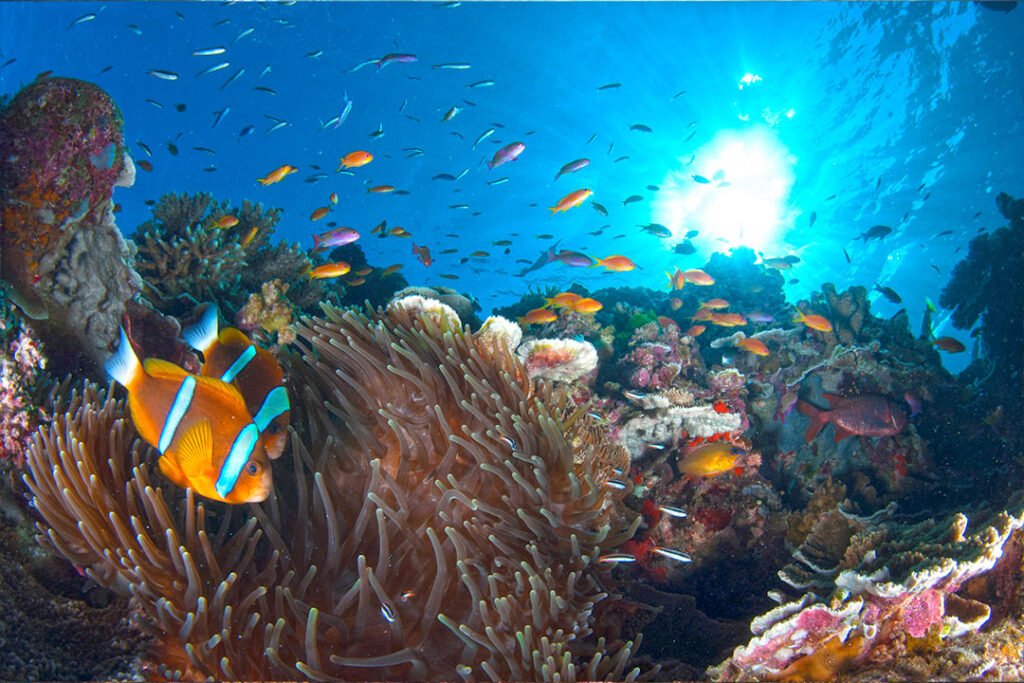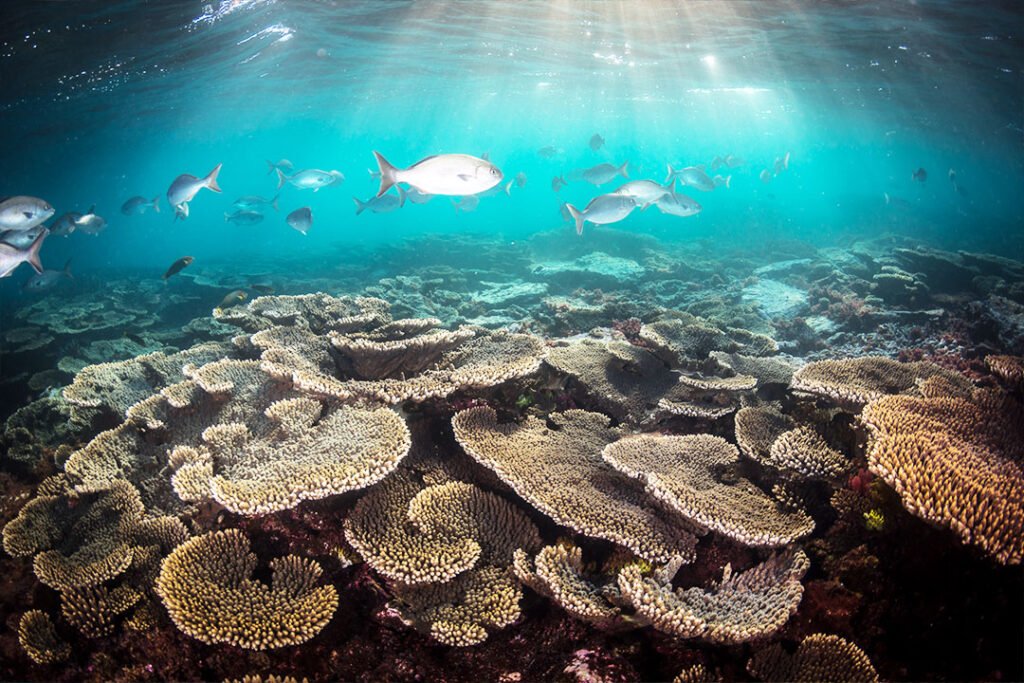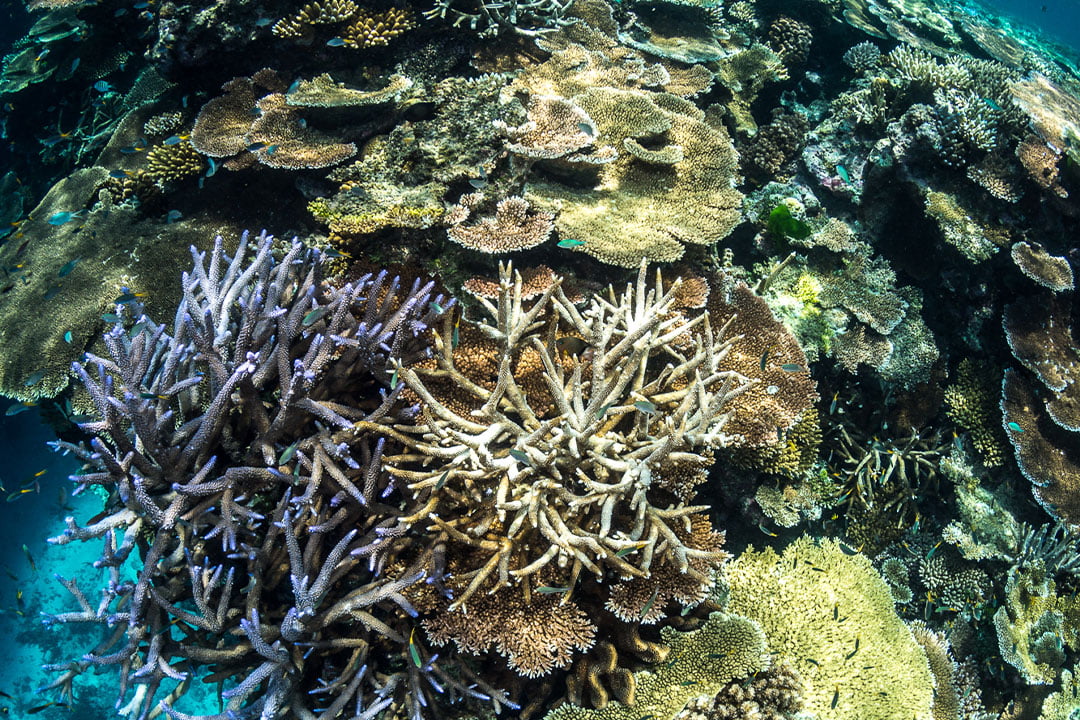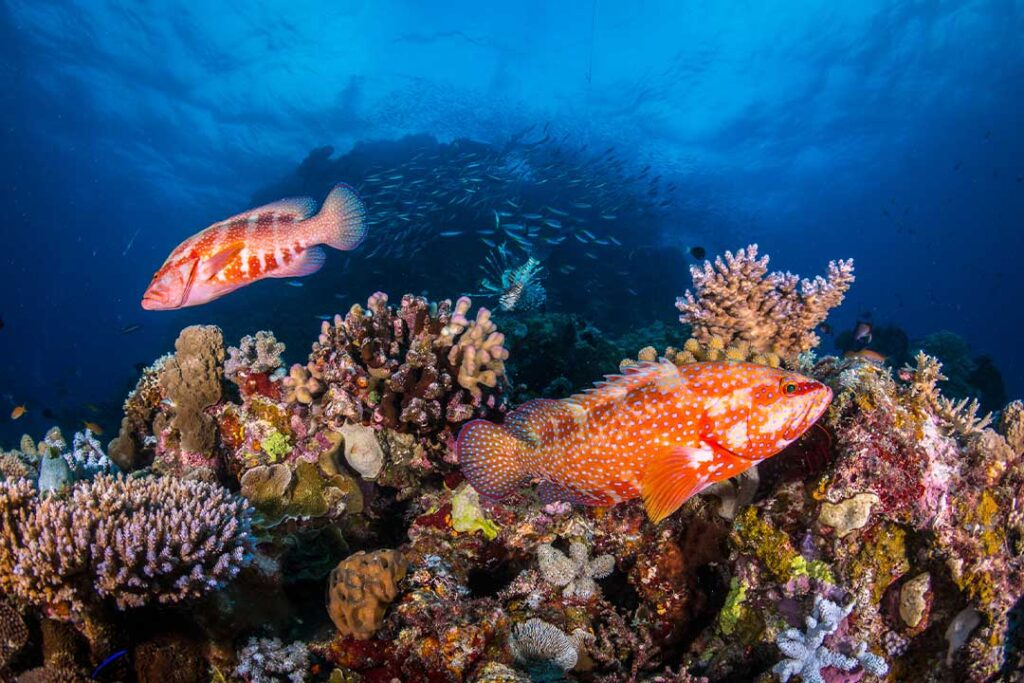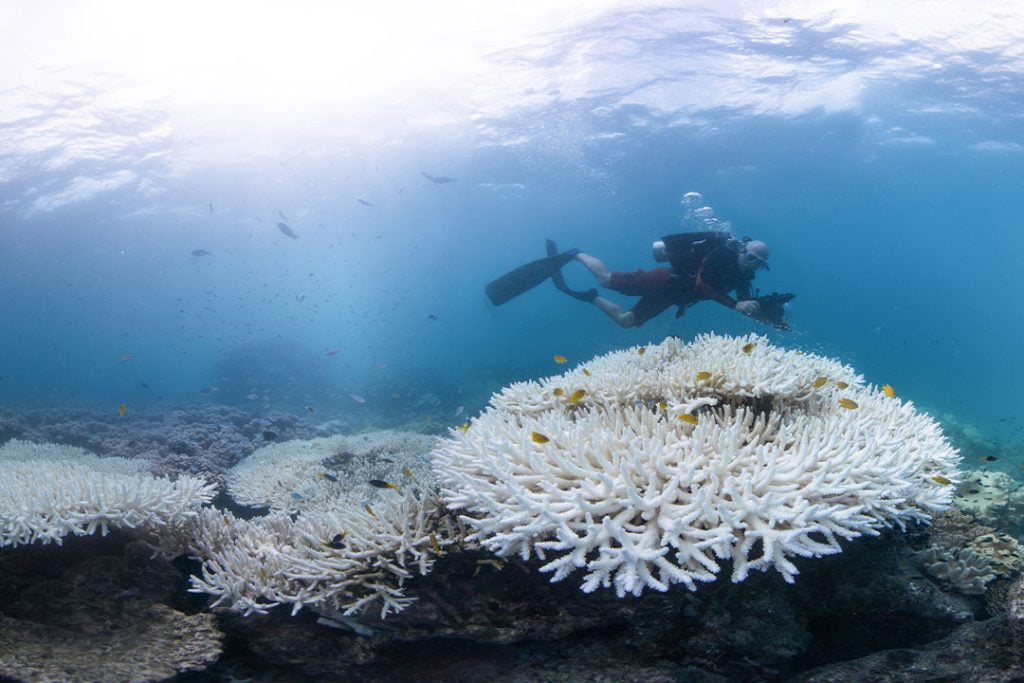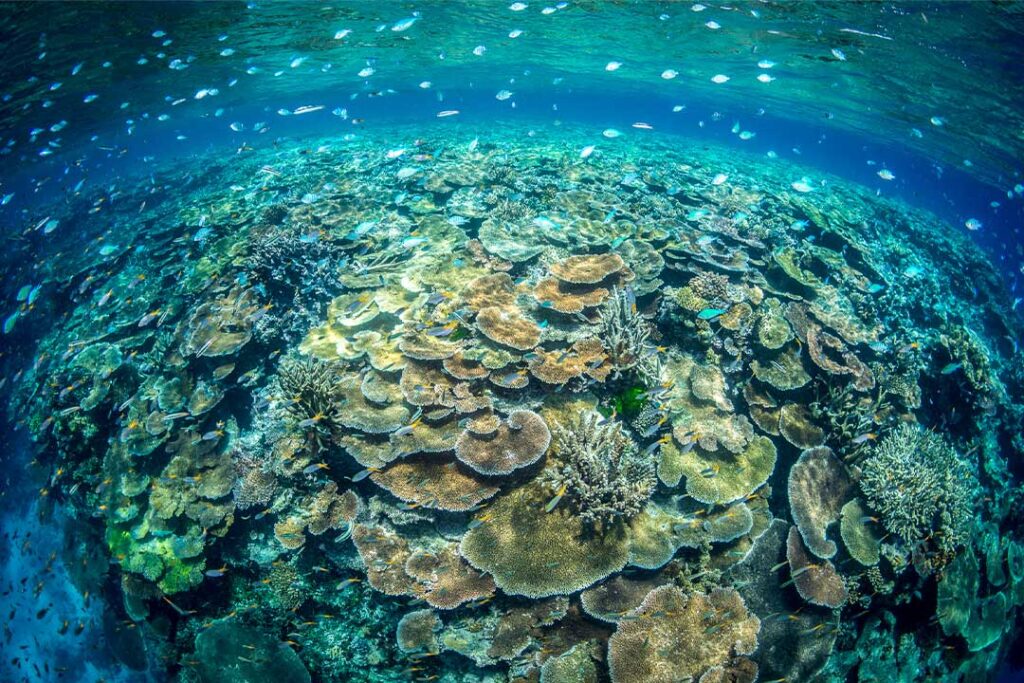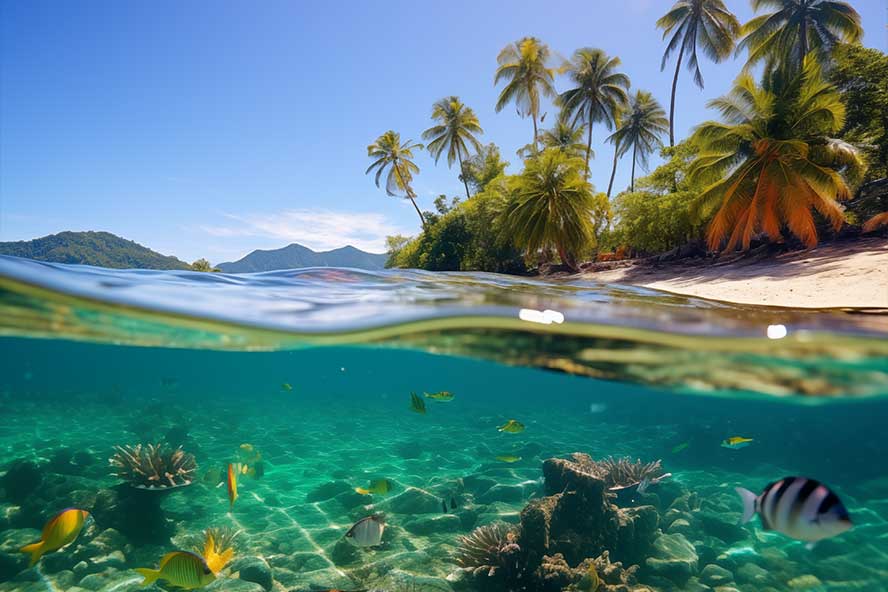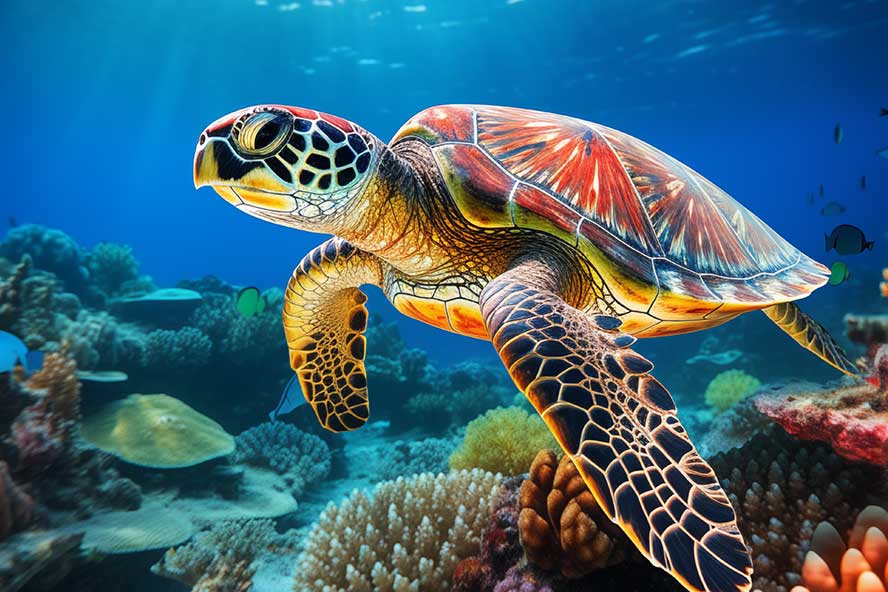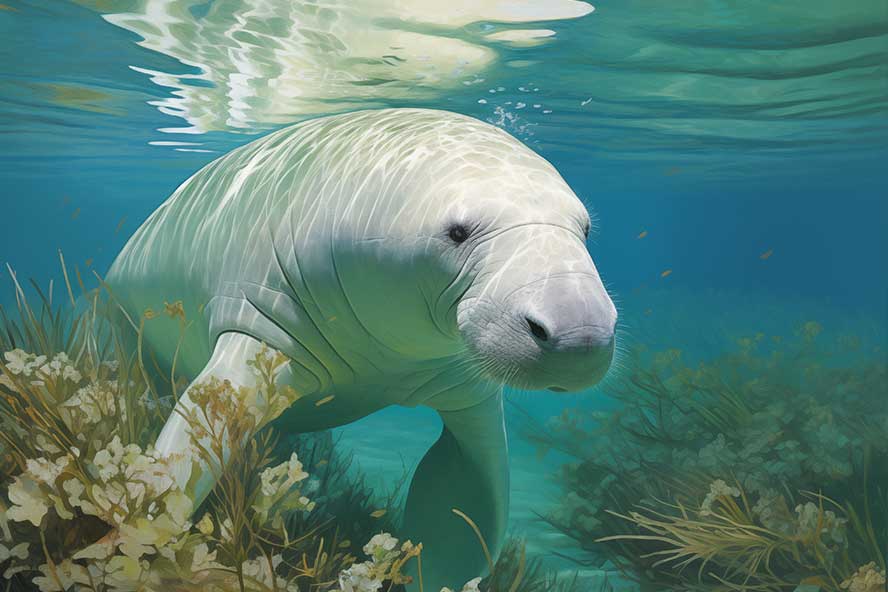Great Barrier Reef Marine Park
The Great Barrier Reef Marine Park is a natural wonder of the world and an essential part of Australia’s identity. An awe-inspiring vista that stretches for over 2,300 kilometres in length and includes the Whitsunday Islands and Whitehaven Beach, it offers visitors a glimpse into a vast marine ecosystem home to thousands of species of fish and other creatures. Metaphorically speaking, this underwater paradise serves as an open invitation from Nature herself – daring us to explore its depths and discover what lies beneath its mesmerizing blue waters.
This article aims to provide readers with an overview of the unique features and characteristics of the Great Barrier Reef Marine Park, including its importance within both Australian culture and global ecology. Furthermore, we will touch on how climate change has affected the park, as well as various conservation efforts that are being undertaken in order to protect this vital asset. Finally, readers will gain insight into why preserving this precious resource is so important not only for Australians but all around the world.
In essence, this article provides a comprehensive look at one of nature’s most majestic creations – emphasizing on why it remains just as relevant today as ever before. The Great Barrier Reef Marine Park deserves our attention; let us heed Nature’s call and uncover her secrets!
Great Barrier Reef Marine Park Quick Facts
The Great Barrier Reef Marine Park is a large, diverse place. I could write for weeks with facts and stats, but I’m sure you are looking for some quick knowledge, so below are some fast facts with links to more details if you wish to read more.
- The Great Barrier Reef Marine Park covers 344,400 square kilometres, which is bigger than Victoria and Tasmania combined.
- This is the world’s largest coral reef ecosystem.
- The marine park includes over 3000 coral reefs and 600 continental islands.
- The park starts from the northern tip of Queensland and extends south to the town of 1770.
- The largest width at the fattest part is 250 kilometres wide.
- The Great Barrier Reef has over a million international visitors each year on average.
- Over 1500 kinds of fish live around the Great Barrier Reef.
To get more Great Barrier Reef facts see our full article here
Overview Of The Great Barrier Reef Marine Park
The Great Barrier Reef Marine Park is a protected area off the coast of Queensland, Australia. Spanning over 344,000 square kilometres, it comprises 2,900 individual reefs and 900 islands that are home to thousands of species of coral and marine life. It is one of the world’s most diverse ecosystems, and UNESCO, which declared it a World Heritage Site in 1981, has recognised its importance for conservation.
As part of the Coral Sea region, the park provides an ideal habitat for many corals that have adapted to changing ocean conditions, including those caused by climate change. The diversity within this ecosystem supports unique biodiversity, with about 1,500 species of fish living alongside 6 species of sea turtles, 30 species of whales and dolphins, and various molluscs, crustaceans, and echinoderms. Furthermore, seagrass meadows provide a vital food source for dugongs, while mangroves offer protection from strong winds and waves during cyclones or storms.
In addition to supporting such a variety of wildlife, this area also offers recreational activities such as snorkelling, swimming, and boat tours, allowing visitors to experience these wonders found beneath the surface up close. It also provides insight into one of nature’s greatest spectacles; exploring this underwater realm helps us understand how we can protect our planet through sustainable practices so that future generations may continue to appreciate its beauty.

What Visitors Can Expect To Experience
The Great Barrier Reef Marine Park is an expansive protected area of ocean and islands off Australia’s eastern coast. It offers a unique opportunity for visitors to experience its diverse environment, which includes coral reefs, tropical islands, and marine life in their natural habitats. The park also provides a range of educational programs that allow visitors to get up close and personal with the wonders of this magnificent ecosystem.
From guided snorkelling tours around colourful coral gardens to learning about local conservation efforts, the educational programs at the Great Barrier Reef are designed to give participants a deeper understanding of this remarkable place. Visitors can join interactive talks with knowledgeable guides or participate in hands-on activities such as beach cleanups or tagging endangered species. There’s something for everyone to enjoy while expanding their knowledge base about the importance of protecting our oceans.
Whether admiring vibrant fish through scuba diving adventures or hopping onto glass-bottom boats that provide spectacular views without ever needing to get wet, there is no shortage of activities for all ages within the Great Barrier Reef Marine Park. Exploring these incredible surroundings gives individuals from all walks of life a chance to gain insight into one of Earth’s most precious resources — its vast oceanic ecosystems — so they can go forth with a newfound respect for preserving them during future travels and excursions.
Wildlife – Fish Corals And More
“A journey of a thousand miles begins with a single step.” This ancient saying is true for any adventure, including the awe-inspiring Great Barrier Reef Marine Park. As one of the world’s seven natural wonders, it offers visitors an abundance of wildlife that can be experienced. From fish to corals and beyond, here are three captivating features:
Firstly, there is no shortage of marine life living in this protected area. Home to thousands of species of tropical fish, these vibrant creatures bring colour and intrigue to each dive site. Additionally, endangered species such as sea turtles and dugongs inhabit particular areas within the reef reserve. Here, they are safe from unnatural threats like fishing or oil spills that could otherwise drastically reduce their population numbers.
Secondly, coral structures create a complex underwater landscape where various plants and animals thrive. Many parts of the park boast healthy populations of hard and soft varieties, providing colourful environments for snorkelers to explore. For those willing to look deeper into nooks and crannies amongst rocks or caves, even more fascinating creatures await discovery!
Finally, hundreds of bird species also call this unique ecosystem home at some point during their migratory cycles, making it a popular destination for avid ornithologists who want to catch glimpses of rare feathered friends on land or during leisurely boat rides along its shores. With so much diversity packed into one location, it’s easy to see why the Great Barrier Reef Marine Park entices people from all over the globe every year!
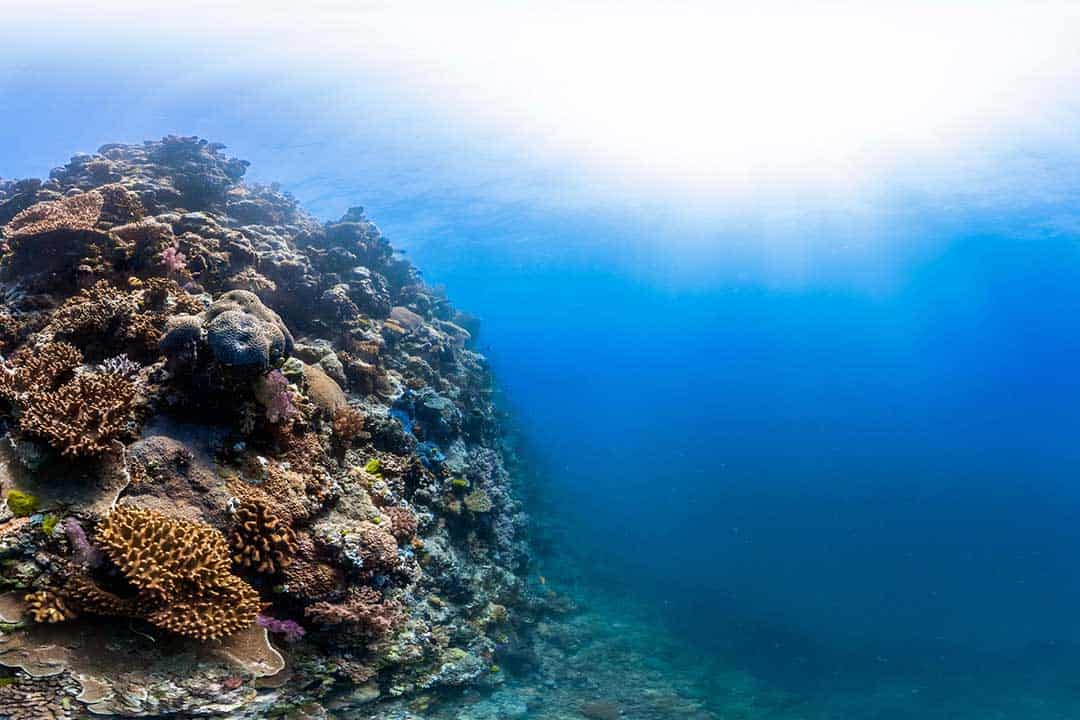
Threats – Climate Change, Pollution And Fishing
The Great Barrier Reef Marine Park is home to an abundance of wildlife, including a variety of fish, corals and more. However, this diverse ecosystem faces some significant threats that must be addressed in order for it to remain healthy and productive. These include climate change, pollution and unsustainable fishing practices.
It is important not to overlook the considerable damage that can be caused by these issues on marine life. Pollution from land-based activities such as farming runoff has been linked to coral bleaching events at the reef which have had catastrophic effects over recent decades. Furthermore, industrialization has led to increased ocean temperatures which further exacerbates this problem. In addition, illegal fishing practices continue to deplete species populations throughout the region and often lead to habitat destruction.
Therefore, managing each of these threats responsibly is essential if we are to protect one of our planet’s greatest natural wonders – The Great Barrier Reef Marine Park. Through education initiatives, sustainable fishing policies and environmental protection legislation we can help ensure its future health. It is also crucial that governments invest in resources necessary for monitoring the reef so any potential issues can be identified early and dealt with swiftly. Moreover, individuals should strive towards reducing their personal carbon footprints as well as make informed choices when buying seafood; both will contribute positively towards preserving the park.
In conclusion’, without mitigating against the challenges posed by climate change, pollution and unsustainable fishing practices; The Great Barrier Reef Marine Park will struggle to maintain its biodiversity into the future. It is thus vitally important that all stakeholders take responsibility for protecting this vital part of our shared environment now before it’s too late.
Conservation Efforts – Coral Restoration, Education, Regulation
The conservation efforts for the Great Barrier Reef Marine Park are nothing short of heroic. A monumental battle is being fought against climate change, pollution and fishing to protect one of the world’s most treasured aquatic species. Every effort made to preserve this fragile ecosystem is a step closer toward its ultimate success.
Coral restoration is proving an effective way of conservation in the Great Barrier Reef Marine Park as it increases coral cover, allowing for more animals to inhabit them which helps restore balance in their environment. Education campaigns have also been launched to raise awareness among people on how they can help save this precious marine park. Regulations such as no-take zones, or areas where fishing activities aren’t allowed, are further helping ensure that the area remains free from any disturbance by humans. By creating these regulations, authorities aim at protecting habitats while limiting human impact.
Though there’s still much work to be done, great strides are being taken to conserve the Great Barrier Reef Marine Park so future generations can marvel at its beauty and experience its rich diversity of life forms. With new technologies being developed every day and laws created with conservation in mind, there is hope yet for our beloved reef.
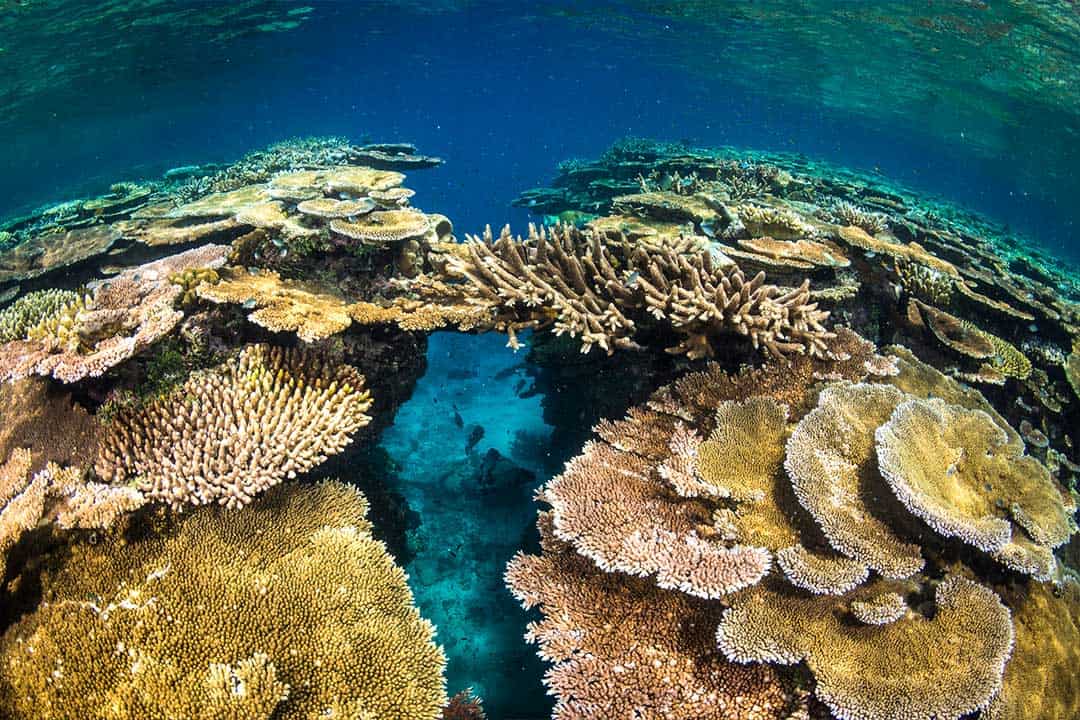
Threats – Climate Change, Pollution And Fishing
The conservation efforts for the Great Barrier Reef Marine Park are nothing short of heroic. A monumental battle is being fought against climate change, pollution and fishing to protect one of the world’s most treasured aquatic species. Every effort made to preserve this fragile ecosystem is a step closer toward its ultimate success.
Coral restoration is proving an effective way of conservation in the Great Barrier Reef Marine Park as it increases coral cover, allowing for more animals to inhabit them which helps restore balance in their environment. Education campaigns have also been launched to raise awareness among people on how they can help save this precious marine park. Regulations such as no-take zones, or areas where fishing activities aren’t allowed, are further helping ensure that the area remains free from any disturbance by humans. By creating these regulations, authorities aim at protecting habitats while limiting human impact.
Though there’s still much work to be done, great strides are being taken to conserve the Great Barrier Reef Marine Park so future generations can marvel at its beauty and experience its rich diversity of life forms. With new technologies being developed everyday and laws created with conservation in mind, there is hope yet for our beloved reef.
How To Visit The Great Barrier Reef Marine Park
A visit to the Great Barrier Reef Marine Park is like opening a door to a realm of natural wonders, with its vibrant coral gardens and diverse marine life. For those looking for an unforgettable experience, there are many ways to explore this majestic ecosystem. Here are some tips on how to best enjoy it:
- Take part in a guided tour or join a dive program – these will provide you with the opportunity to learn about the park’s flora and fauna from experienced local guides.
- The 3 main locations with multiple tourism operators are The Whitsundays, Cairns and the town of 1770.
- Log snorkelling spots that feature clear waters and abundant wildlife – be sure to bring your underwater camera along!
- Visit one of the visitor centres located throughout the park – here you can find out more about conservation efforts such as coral restoration programs and educational resources for visitors.
Visiting the Great Barrier Reef Marine Park allows travellers to get up close and personal with nature in all her glory. From experiencing awe-inspiring sunsets over crystal-clear waters to discovering unique species in their habitat, there’s something magical awaiting every adventurer who sets foot into this paradise. With careful planning, respectful behaviour, and understanding of regulations set by governing bodies, everyone has the potential to make lasting memories while preserving this precious environment for future generations.
When is the best time to Visit the Great Barrier Reef?
When considering when to make your journey to the Great Barrier Reef Marine Park, there are several factors that should be taken into account:
1) Weather – Average temperatures range from 22-35℃ with more rainfall between October and April;
2) Crowds – Peak season generally occurs in school holidays when tourist numbers swell significantly;
3) Activities – Depending on what activities interest you such as scuba diving or snorkelling, certain times may be better suited; and lastly
4) Wildlife – Certain animals can only be seen at specific times of year.
April to November is the best time to visit to avoid the humidity, temperatures are normally around 25 to 30 deg and winds generally are from the south
December To March is the wet season (some years) generally the humidity is very high, with some good rain periods, and winds tend more northerly during this time.
Tips For Visting
The Great Barrier Reef Marine Park is a popular destination for tourists and travellers alike. Located off the coast of Queensland, Australia, it boasts coral reefs, diverse marine life and stunning views. Visiting this remarkable area requires some planning; here are some tips on how to make the most of your experience.
When considering accommodation, visitors should think about staying in or near one of the many coastal towns located within easy reach of the marine park. This will enable them to access activities such as boat tours, snorkelling and diving expeditions with ease. Alternatively, there are several resorts along the coastline that offer a range of services including guided trips through different parts of the reef.
It’s important to remember that while exploring the reef and its surrounding areas, you should do so responsibly. That means avoiding taking souvenirs from living organisms or disturbing any wildlife while observing them. Additionally, it’s recommended to wear sun protection when spending time outdoors due to strong UV levels at certain times throughout the year.
By following these tips and remaining aware of your environment during your visit to The Great Barrier Reef Marine Park, you can ensure an enjoyable trip full of memorable experiences whilst preserving its natural beauty for future generations to enjoy.

Things To Do In The Whitsundays Marine Park
Being a massive tourist drawcard there is plenty of things to do in the Great Barrier Marine Park and here are our top 10 things to do below
1. Take a day tour of Whitehaven Beach
2. Take a day tour of the outer Great Barrier Reef
3. Scenic Flight over the Whitsunday Whitehaven Beach and Heart Reef.
4. Stay overnight on the reef with Reef Sleep
5. Enjoy a 4 day 3-night sailing tour with Prosail which included the outer great barrier Reef
6. Take a 4-night Spearfishing charter with Prosail
7. Scuba Diving Tours
8. Snorkelling Tours
9. Take a Whitsundays Day Tour to the islands in the marine park
10. Visit Daydream Island Resorts’ living reef.
Public Boat Ramps For Accessing The Marine Park Around Airlie Beach
Bringing your own boat to discover the Great Barrier Reef Marine Park? there are 4 boat ramps in Airlie Beach, these do get very busy during school holidays and low wind days.
- Coral Sea Marina
- Port Of Airlie
- Vmr
- Shute Harbour
Places To Stay At The Reef
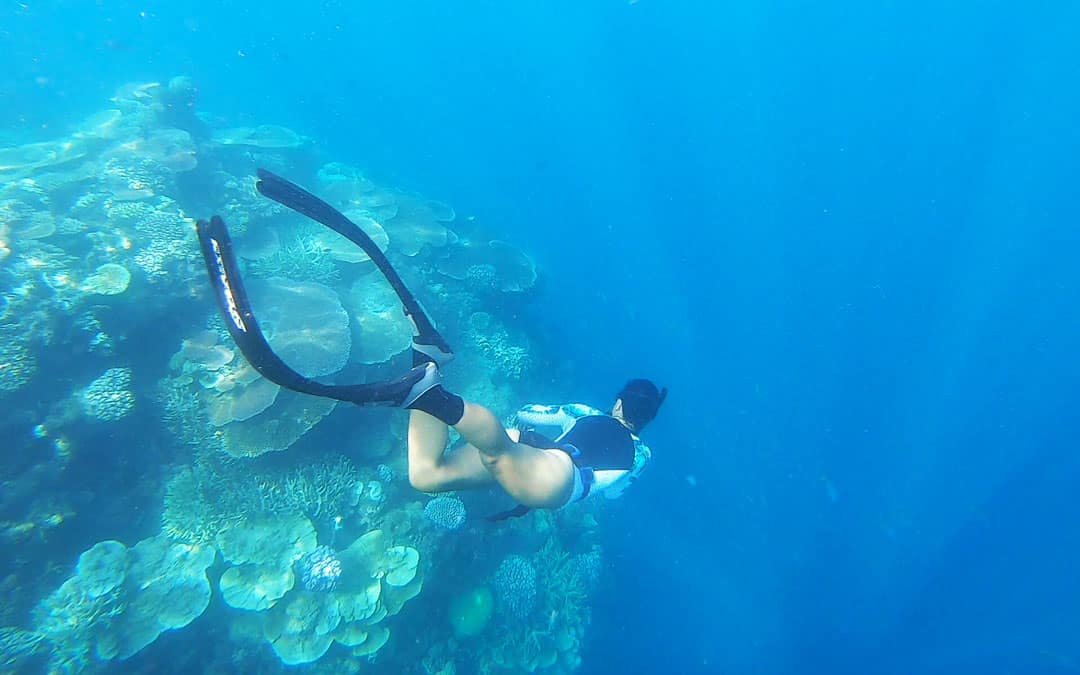
There are 2 ways to stay at the outer Great Barrier Reef
1. Reef sleep operated by Cruise Whitsundays, they have a pontoon at Hardy Reef where there are options for sleeping in swags under the stars or private rooms below the waterline with large underwater viewing windows
2. Overnight tour on a boat, Prosail has a 4-day 3 night sailing adventure that visits the outer reef for a day, they also have a spearfishing trip and freediving trip that also visits the reef. All these options are sleeping on a boat dorm style
Great Barrier Reef FAQ
What Is The Size Of The Great Barrier Reef Marine Park?
The Great Barrier Reef Marine Park is one of nature’s greatest wonders. Spanning an impressive area, it is the largest living structure in the world and a symbol of freedom to many people. With its sheer size and incredible beauty, this park beckons travellers from far and wide:
– 344,000 square kilometres of stunningly vivid coral reef
– Over 600 islands scattered throughout the region providing unique ecosystems
– Thousands of species of animals that call the reef home
Are There Any Special Permits Required To Visit The Great Barrier Reef Marine Park?
To protect such delicate ecosystems, there are specific permissions granted to access the marine park. Commercial permits are granted by the Great Barrier Reef Marine Park Authority and the Queensland Department of Environment and Science through a joint permission system. This includes recreational activities like snorkelling and scuba diving, commercial tourism operations such as whale watching tours or fishing charters; research-based trips conducted by universities or other institutions; or even filming projects undertaken by production companies or filmmakers. If you are travelling on a commercial tour your Environmental Management Charge (EMC) will be included in the ticket price, the commercial operator then pays this charge to the Great Barrier Reef Marine Park Authority on your behalf.
Are There Any Restrictions On The Types Of Activities That Can Be Undertaken In The Great Barrier Reef Marine Park?
As an idyllic destination for snorkelers, divers, and beachgoers alike, it’s important to note that certain activities are prohibited in parts of the marine park and allowed in others. It all comes down to ZONES and what zone you will be visiting. EG Green zone Yellow Zone etc).
To find all the zones and what they mean including “Best Reef Practices see this page on GBRMPA’S website
Not only do these regulations help protect marine life from harm caused by careless behaviour; but they also create a safe environment for humans who wish to interact with nature responsibly.
Are There Any Guides Available To Aid Visitors In Exploring The Great Barrier Reef Marine Park?
To begin with, tour guides have expertise on the best spots to visit within the park – from where one might find an abundance of sea turtles or beautiful coral formations. Additionally, they will also inform visitors about how to stay safe while engaging in activities such as snorkelling or scuba diving. As such, having a guide allows travellers to maximize their time spent at the marine park by learning which areas offer optimal viewing experiences and avoiding any potential hazards. Furthermore, given the sheer size of the reef, even experienced divers may benefit from guidance regarding park boundaries and safety regulations that must be followed when enjoying its wonders.
Consequently, it comes as no surprise that there is significant demand for knowledgeable local tour guides who specialize in exploring the Great Barrier Reef Marine Park. These individuals not only possess knowledge about diverse aspects of flora and fauna found throughout the area but are also adept at sharing stories related to Aboriginal culture and history that makes up part of its character. By providing guests with meaningful insights while navigating through its waterscapes, these tour guides enable them to gain a richer understanding of what lies beneath as well as appreciate all nuances associated with this iconic destination.
To see a list of tours with experienced tour guides see our tours page here
How can I get to the Great Barrier Reef, and what's the best time to visit?
The 3 main locations of the Great Barrier Reef for tourists are The Whitsundays, Cairns and the town of 1770. Each of these locations has multiple tourism operators that can take you to the Great Barrier Reef.
Best time of year to visit takes in the factors below
1) Weather – Average temperatures range from 22-35℃ with more rainfall between October and April;
2) Crowds – Peak season generally occurs in school holidays when tourist numbers swell significantly;
3) Activities – Depending on what activities interest you such as scuba diving or snorkelling, certain times may be better suited; and lastly
4) Wildlife – Certain animals can only be seen at specific times of year.
What kinds of marine life can I expect to see while snorkeling or diving on the Great Barrier Reef?
There are way too many to list so I will concentrate on the “Great Eight”. These are the icons of the Great Barrier Reef and the ones most people hope to see;
- Clownfish (nemos)
- Turtles
- Manta rays
- Maori wrasse
- Sharks
- Giant clams
- Potato cod
- Whales
Is it safe to swim in the Great Barrier Reef?
The waters of the Great Barrier Reef Marine Park do hold dangerous marine life (like any ocean) the biggest threat being dangerous jellyfish like the Box Jellyfish or Irukandji Jellyfish, also to the far north of the reef as it gets closer to land and rivers Crocodiles are more present, and of course, we can not forget sharks, stingrays etc.
But there are over a million people that visit the reef every year and incidents are very very low. Tours know the safest parts of the reef and what not to do to attract predators.
The jellyfish threat can be easily overcome by wearing a stinger suit (very lite wetsuit) which most reputable tour operators provide in the ticket price.
It is extremely rare to experience surf conditions, strong currents, rips etc, once at the reef you are protected from the massive size of the structure 90% of the time you will have flat waters.
Hi, I’m Nath J, a long-time local who’s been lucky enough to live and work tourism in the Whitsundays since 2001.
Over the past two decades, I’ve helped visitors discover the best of this incredible region, from Whitehaven Beach and Hill Inlet to the hidden spots only locals know about. I started out managing boats and tours, and these days I run Ripple Effect Online, a tourism-focused digital marketing business helping local operators grow and connect with travellers like you.
I’ve written an ebook called Whitsunday Islands: A Journey through Paradise, created countless local travel guides, and earned recognition as a “Whitsundays Tourism Hero” from QTIC for my contribution to the region and gained First Nations Cultural Protocol training through QTIC as well. But more importantly, I’ve spent years listening to travellers, understanding what makes a trip unforgettable, and helping people plan the kind of experience they’ll talk about for years.
If you’re planning a visit to Whitehaven Beach or anywhere in the Whitsundays, I’m here to help you make it amazing.
Find me on Facebook and LinkedIn or drop me an email at info@nath-j.au.

